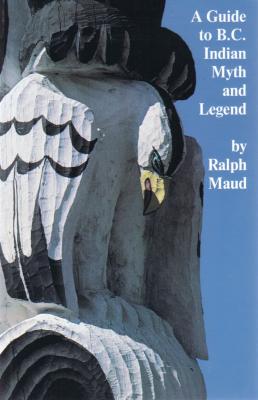A Guide to B.C. Indian Myth and Legend. Ralph Maud
Чтение книги онлайн.
Читать онлайн книгу A Guide to B.C. Indian Myth and Legend - Ralph Maud страница

A Guide to B.C. Indian Myth and Legend
A Short History of Myth-Collecting and a Survey of Published Texts
by Ralph Maud
Table of Contents
Chapter III Franz Boas: Early Field Work
Chapter IV James Teit of Spences Bridge
Chapter V Franz Boas: Collaborations
Chapter VI Boas’s Students in the Canadian West: Chamberlain, Swanton and Sapir
Chapter VII The National Museum Men
Chapter VIII B.C. Mythography up to the Present
Table of Field-Trips within B.C. and Resulting Publications
List of Illustrations
Tralahaet (Frank Bolton) recording Tsimshian Songs
Father Morice, with Judge Howay
Franz Boas, with Marie Krackowizer
"Jimmy Teit and a Rocky Mountain Goat"
George Hunt and family, with visiting anthropologist
T.F. Mcllwraith, with Bella Coola friends
Louis Miranda and Randy Bouchard
Chapter I Introduction
Of the proposed series, The Indian History of British Columbia, Wilson Duff completed one volume only, The Impact of the White Man (B.C. Provincial Museum 1964). Presumably a subsequent volume would have dealt with Indian history as seen by the Native people themselves: the creation of the world, the flood and other disasters, the legends behind local topography, the founding of the great families and their crests, the doings of shamans and warriors. Attention would have been paid to the important tales about Raven, Coyote, Bear, Beaver, Mink, Bluejay, and all the other animals whose adventures in the early times were just as real as later history, so it was said. This book does not attempt such a comprehensive treatment of the Indian world view, but presents a survey of the materials available for doing so.
To use the present-day provincial boundary of British Columbia as a cut-off point is not so arbitrary as it might seem. Of course, myths and legends know no such confines; to track any single theme would take us beyond the Pacific area into the world at large. But since we are concerned not so much with myths as with myth collecting, British Columbia presents an interesting case. Franz Boas and his close associates did their earliest field work here, concurrent with an indigenous strain of folklorists. The rise and fall of the National Museum’s interest in the West Coast is a curious phenomenon. Lately we have had a rush of expert linguists doing a massive salvaging of the languages, which has abetted the new concern by Native leaders for all aspects of their old culture, including myths and legends. B.C. thus provides a varied panorama for what I shall call “mythography,” the study of how a people’s oral traditional literature becomes available to us in published form.
I want first, however, to focus on three individuals who worked just outside the perimeter of British Columbia. They are exemplary: their myth collecting is notable not only for its intrinsic quality but also for the clarification it provides on the process of transmission of myths from performance to paper. (1) Emile Petitot was an Oblate missionary in the Northwest Territories from 1862 to 1883, and in the midst of extreme privation wrote down serene ethnographic observations. His Traditions Indiennes du Canada Nord-Ouest (1886) is still kept in print by its Paris publisher. (2) Archie Phinney worked in the field for only one season to produce his outstanding Nez Perce Texts (1934); but among Franz Boas’s students, Phinney was unique, a full-blooded Native of the tribe he was assigned to study. (3) In 1970, a well-respected anthropologist, Catharine McClellan, decided to throw caution to the winds and used the word “masterpiece” in relation to a Native story. In publishing The Girl Who Married the Bear (Ottawa 1970)